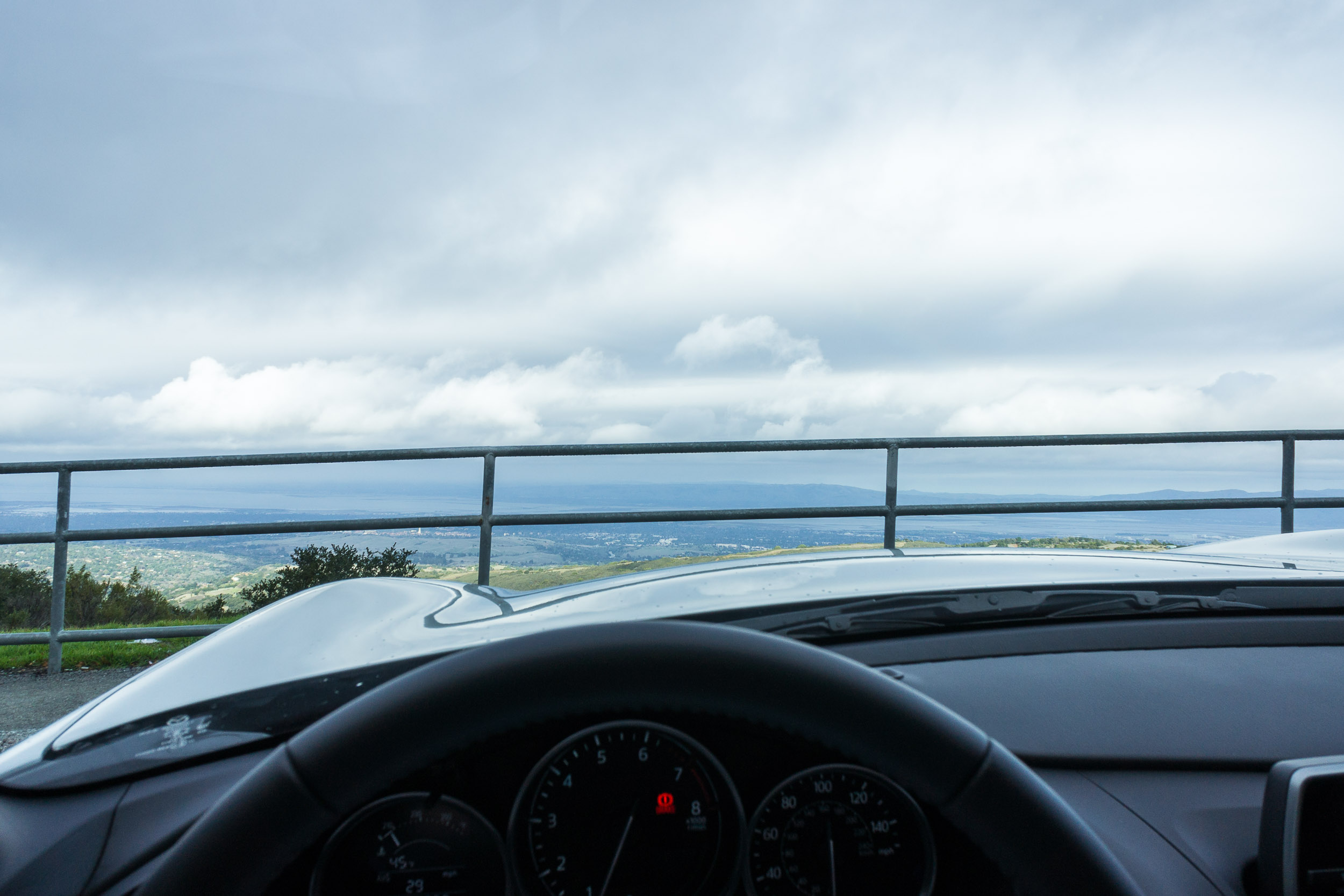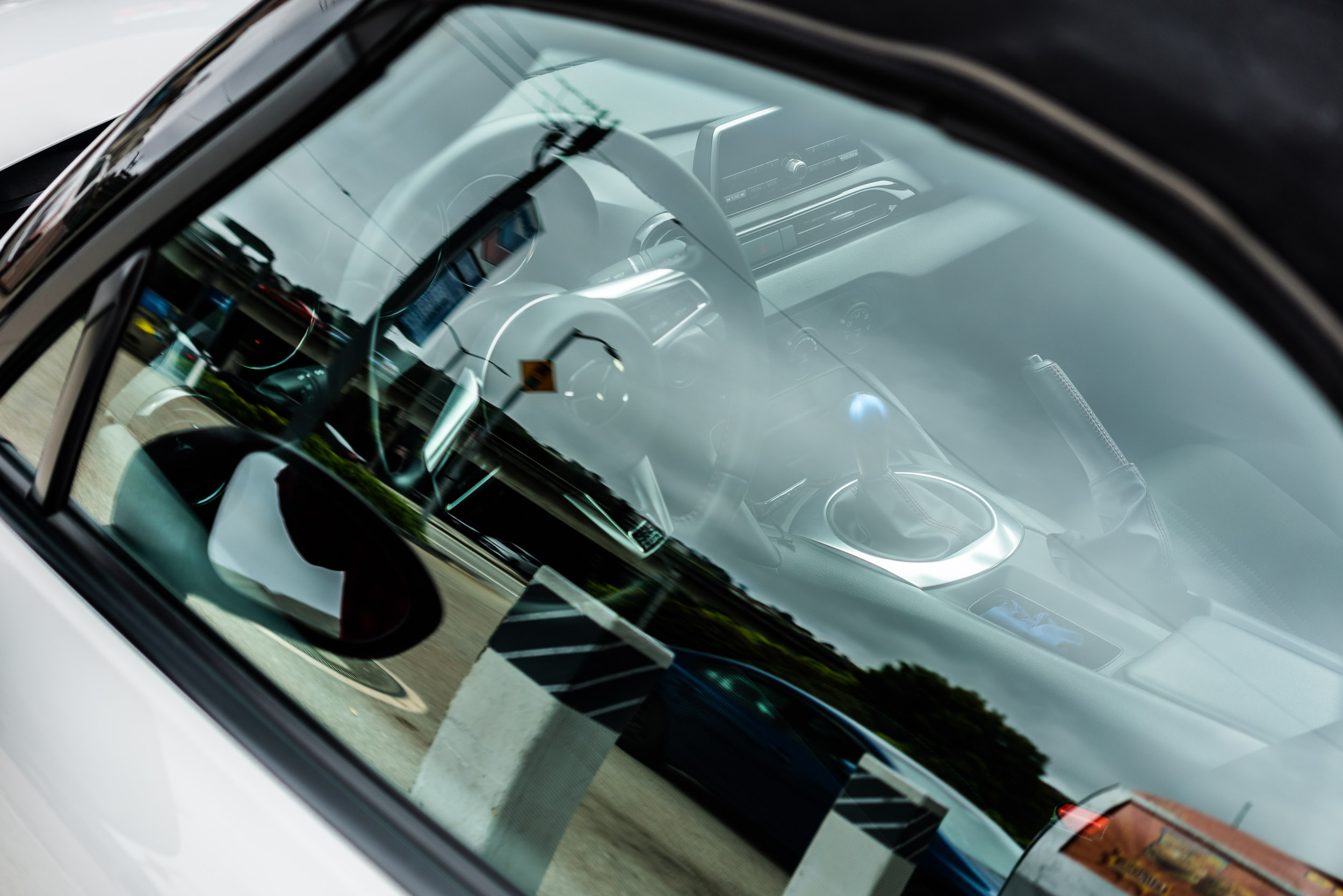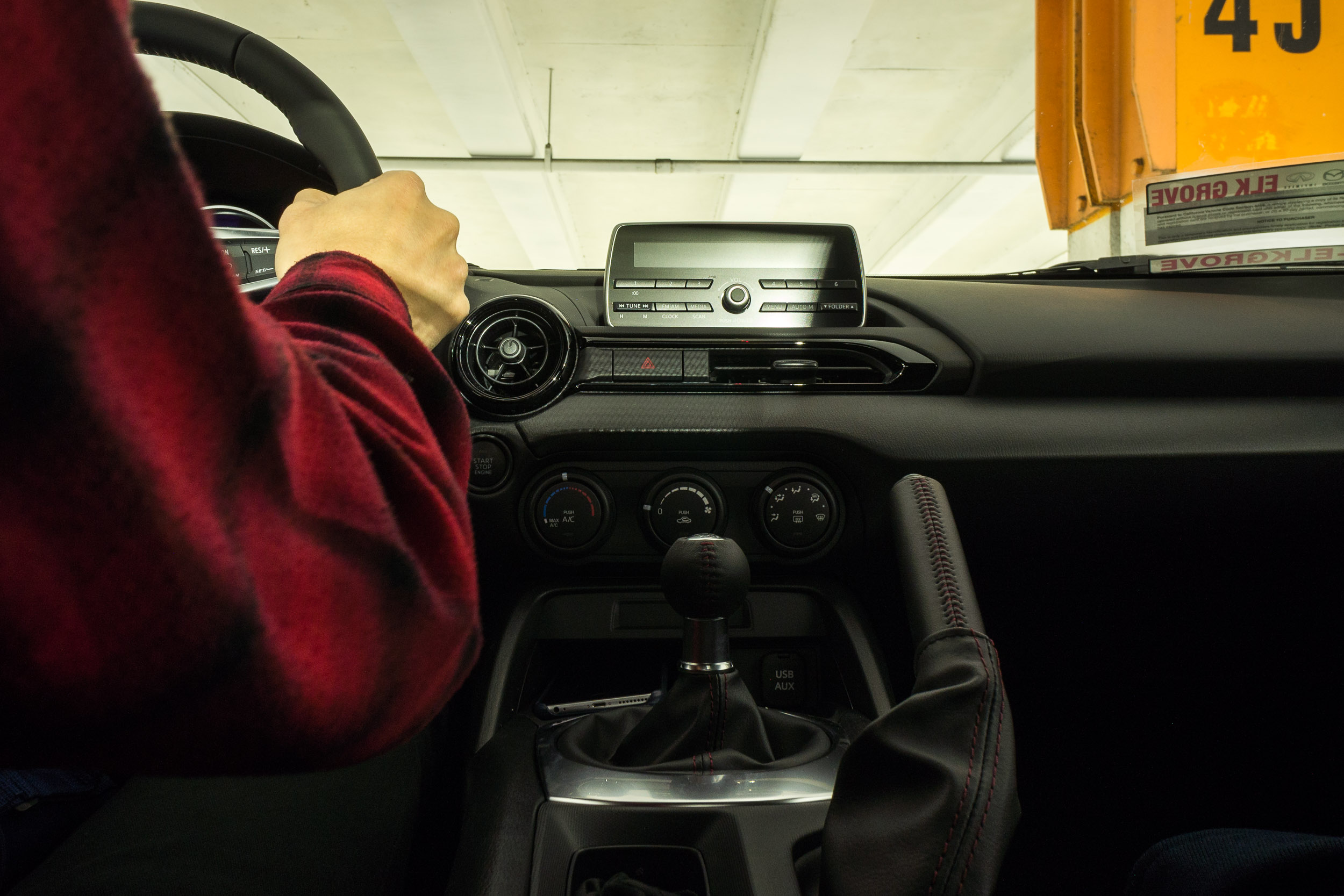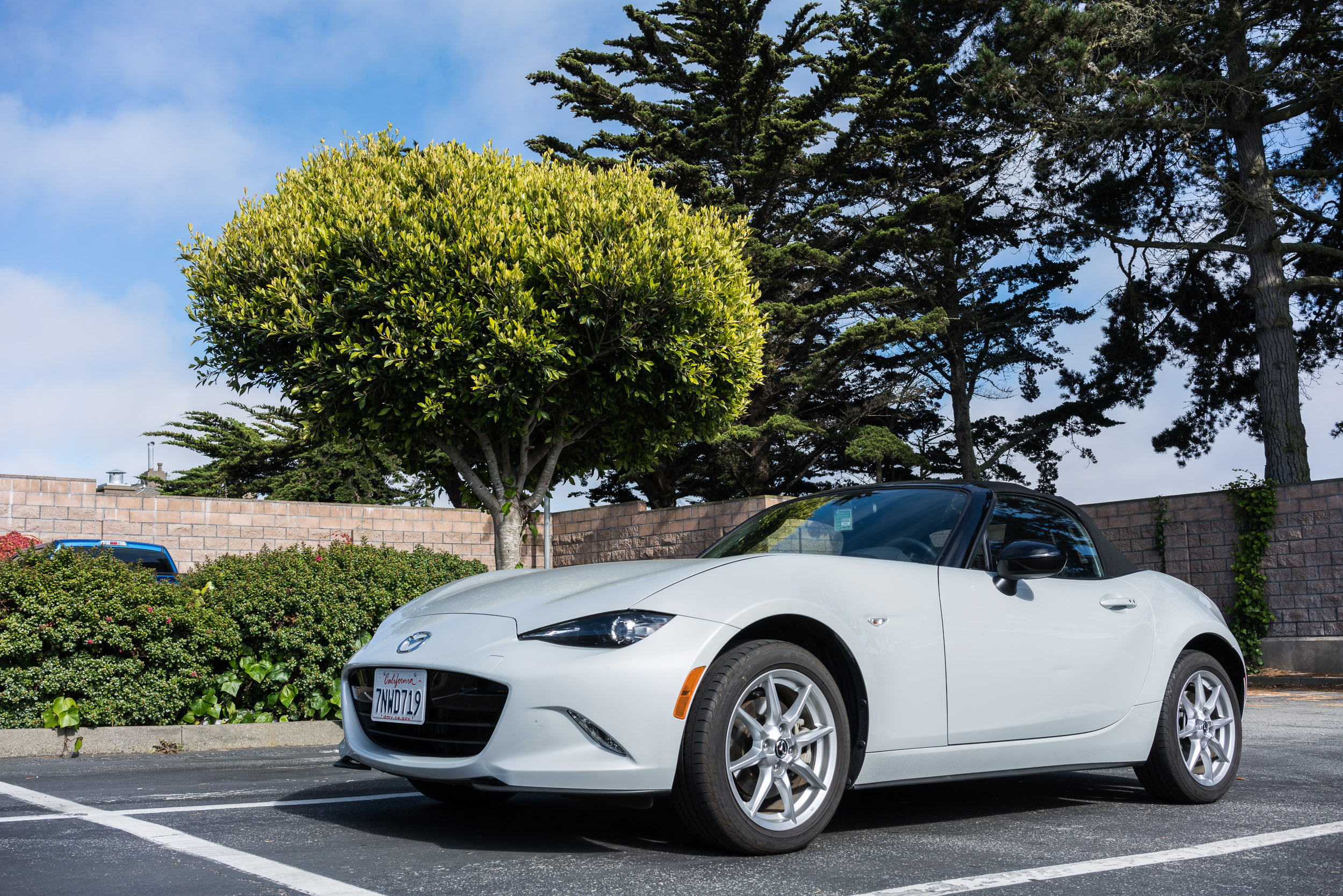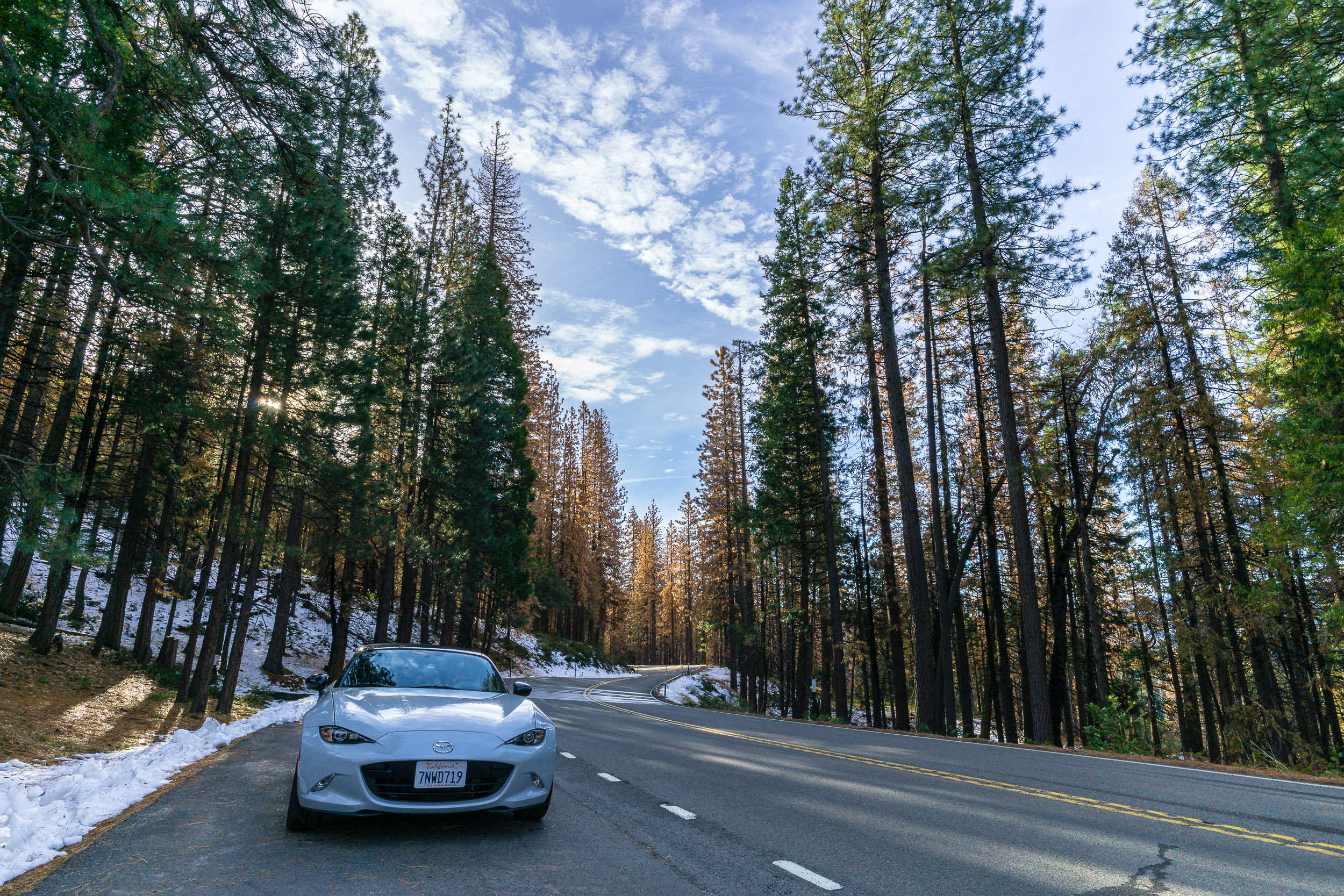2.5 Years of 'Jinba Ittai'
What most ensnared me to the car was Mazda’s philosophy.
In developing the fourth-generation (ND) MX-5, Mazda aimed to make the new Miata equally light as the beloved first-generation (NA) and dimensionally smaller than the third-generation (NC). I was pleasantly surprised by this because new generations of vehicles tend to be bigger than the predecessors; a contemporary Toyota Camry easily dwarfs a model from the early aughts.
I bet most people thought the ND Miata would be bigger and more powerful than the NC. Neither of those turned out to be true.
Colin Chapman would be proud: Mazda added lightness to go faster.
I was also drawn in by the beautiful shape. Before the ND I’ve dismissed the MX-5 as a viable sports-car because of its odd appearance: it’s too symmetric. The NC Miata was the worst offender: squint and you’d have a harder time differentiating the front from the rear. The ND finally gave the Mazda flagship proper front-engine sports-car proportions: long hood, short deck, wheels pushed to the corners.
If Jaguar were to design a tiny convertible sports-car, something to slot below the F-Type, it’d look very much like the ND Miata. Mix in there as well are a bits reminiscing of a BMW Z8, especially the view from three-quarters. After the hugely polarizing ‘smiley face’ of the NC, Mazda absolutely nailed the design of the ND Miata: a shrunken down grand-touring style convertible.
The car's best view? From the front.
The final hurdle before purchase was whether or not I’d fit. I’ve sat in an NC Miata and I cannot adjust to the ideal driving position without punching my head through the cloth top (drive top down all the time?). Mazda made the ND slightly smaller but have done so without sacrificing any of the already scarce interior space. To my relief I am able to sit properly in the ND, leaving two finger’s worth of space between head and roof. It’s clear Mazda have engineered the interior packaging to accommodate more body size variables than before.
It’s far from ideal, though. I’d love to sit lower but for whatever reason the ND Miata’s seat mechanism doesn’t have a singular adjustment for height. Rather than flat, the seat-rail is inclined ascending forward so that when the seat is moved laterally the height is increased closer to the dashboard and decreased when pushed away. It’s a genius engineering to save a bit of kilos but with my long torso/short legs combo I need to sit close to the steering wheel but that means the seat is higher than what it can be.
The steering wheel doesn’t telescope either (saving more precious kilograms) so while I do have a good driving-position in the ND, it definitely can be improved.
As expected it’s mighty narrow inside, and space is at a premium. I can reach over and roll down the passenger-side window without my back leaving the seatback. The glove-box is behind in between the driver and passenger, requiring elbow and or back contortion to access. The aperture underneath the center-console lid is so small it can’t even fit a smartphone. The door-panels are entirely absent of map pockets so the passenger seat suffices as substitute to store items.
The important bits however are well done indeed: the seats are supportive and comfortable even though they look plain and generic. On a road trip to LA the numb buttocks I experienced during a similar trip in another car was happily absent. The steering wheel feels good in the hand, though the diameter is a tad too large for me tastes, and the rim could be thicker. The manual convertible top cannot be more easier and faster to operate (unlatch, flip, latch – with one hand). One has to wonder why don’t every manufacturer use the same system rather than opting for heavy and slow automatic roofs.
It feels wonderful to be so cocooned inside the ND: driving feel is spot on and the proverbial “being one with the car” rings very true. The seating position is downright supercar: it’s super low (getting out the car is never elegant), your feet is splayed out front practically horizontal, and the interior is shrink-wrapped around you.
Not bad for 25 grand.
Power however is not so supercar, though lots of grunt was never the Miata ethos. The ND is motivated by the same naturally-aspirated 2-liter four-cylinder found in the Mazda 3 sedan. That sounds quite disappointing on paper, but given the pricing aim a bespoke motor is probably impossible. Mazda did tweak the engine slightly to make it rev freer and have a sports-car worthy exhaust note. It makes 155 horsepower, more than enough for the 2,300 pound frame. Indeed the motor sounds amazing, and unlike turbocharged units that run out of steam early, the atmospheric Skyactiv unit punches straight to redline, egging on the driver to play chicken with the rev limiter.
Grab the next gear and you’ll find one of the finest manual gearboxes ever made. Essentially a mid-engine car, the ND’s motor is entirely behind the front-axle. With drive going towards the rear, the transmission is located inline right underneath the driver’s shifting arm. With no need for connecting cables, the gear-level is connected directly to gearbox; at neutral idle it does this delightful dance as it shakes along other drivetrain components.
It’s tactile joy to row through the gears in the ND: the feel is heavy yet forgiving, and each gate is supremely defined. The stick slots into each gear with such mechanical ease and solidity you’d want to do it over and over – and the opportunity is always there. Mazda geared the ND very short: the run to 60 requires three shifts, and 6th gear is 1 to 1. It makes local street driving super engaging, much more fun than high power sports-cars where the end of 2nd gear is already jail-time territory.
The jewel of a transmission is paired with a great set of pedals. The clutch can’t claim to be the most feel-some, but vague it isn’t, and it does the job well consistently. The floor-hinged throttle pedal eases heel-toe maneuvers, and the placement of the brake pedal is judged perfectly for such purposes. The ND is a good car to learn advance downshift techniques (or manual gearbox in general) with; my first successful heel-toe pedal dance was in the Miata.
As my first foray in rear-wheel drive dynamics, the ND Miata’s supreme balance may have spoiled me forever. The car is neutral at all times; understeer can only be provoked by going too stupidly fast into a corner. Likewise I can only coax oversteer when the surface is damp from rain. With modest power and lacking a locking differential from the Club trim, in the dry it’s nearly impossible to induce the tail outwards. The ND smoothly points and goes without need to fight against any sort of countering forces.
In a word, it’s sublime. I’m going to ill-prepared in the future when I get into other rear-wheel drive cars because they won’t be nearly as balanced as the ND.
Though I hope those cars will have better steering feel. The rack on the MX-5 is pointy, direct, and sharp in complement to the brilliant chassis, but ultimate tactile sensation just isn’t there. My previous car was an WRX STI and its hydraulic-assisted rack was full of information to the hand. In contrast the ND’s electric power-steering is vague and leaves a bit wanting. The car is lucky in its balance because otherwise the scant details from the steering leaves the driver unprepared for sudden reactions; more muscle memory than innate adaptation. The ND Miata’s steering is adequate for its purposes, but a point for improvement in future iterations.
No need to change however is the overall size of the car. I love how small and nimble the ND is, especially in dense metropolitan cities full of traffic. The ability to slot into spaces and take shortcuts other vehicles physically cannot always brings a smile to my face. A normal car that would’ve been blocked by the leading pack from making a right turn on red, the MX-5 squeeze through on the side no problem. I reach the zenith of smugness when I find street parking spots in between two houses that only cars the size of a Miata and smaller can fit.
I became that guy in a parking structure that when parked in between vehicles my spot looks like it’s empty.
Of course, the diminutive dimensions also has negative side effects. Not only are vehicles getting larger, but the most popular kind of car these days are sports-utility vehicles. Suffice it to say the ND is at a dangerous size disadvantage. I can literally hide in most people’s blind-spots, and had to perform evasive maneuver countless times because the driver didn’t do a head check, thought the lane was clear (it wasn’t), and proceeded to switch lanes onto me.
It isn’t too difficult to imagine how horrible of a shape I’d be in were I to collide with the typical sized car. Thankfully I haven’t had to find out.
Blindspot monitoring systems saves lives.
Along with the aforementioned lack of interior storage space, the ND Miata’s barely six cubic-feet trunk is a hindrance during the rare road-trips and airport runs. It can fit an entire Costco pizza laid flat, for what it’s worth. Most of the time items larger than a weekend bag gets transported in the passenger seat, or by the passenger if one is present. On one particular trip to the airport the friend I was driving had to hold her luggage on her lap because it wouldn’t fit through the trunk opening.
Part of the fun of owning a Miata, I would say.
The running costs for all that fun is delightfully minimal. Weighting practically nothing compared to the average car, even when I mash the go pedal with abandon the ND returns around 27 miles-per-gallon. Hypermiling on a road-trip can easily net efficiency in the 40s. According to tracking on Fuelly, the ND costs me $0.111 per mile in petrol, which is apparently quite good.
Washing the ND takes half the time of a normal car.
The two-liter engine requires about five quarts of 0W-20 synthetic oil, costing only around 30 dollars for top brands. Throw in a filter for seven dollars and an single oil-change can be done for under 40 bucks – bring your own labor. The MX-5’s lightness means consumables aren’t as fast wearing: after 17,000 miles, tires and brake material looks barely worn in. When it’s time to service those items, it’ll be incredibly cheap. In the Sport trim the ND Miata runs 16-inch wheels, comically tiny these days when a new Honda Civic Type R comes standard with 20 inchers. However, a set of four decent replacement 195/50R16 tires is well below 400 dollars.
The same amount will only buy you one tire on the Civic Type R.
For urban city drivers I think the ND Miata is the best sports-car for the money; an MX-5 blends in where a Porsche Cayman couldn’t. The precise chassis balance, the short and sweet gearbox, and the punchy engine can be enjoyed well below speed limits. A favorite things to do in the ND is tackling 90-degree turns at street corners: I must judge the braking point, heel-toe downshift to second gear, and then steer the car smoothly through, waiting for the exact moment to apply throttle.
To derive the same driving pleasure from a Cayman you’d need at least a mountain road, if not a full-on track. In an old episode of Top Gear, while driving a Nissan GT-R through Tokyo, Jeremy Clarkson hyperbolically remarked that Tokyo isn’t a city, it’s a racetrack.
The ND Miata makes any city a racetrack.
The absurdly low maintenance costs and parking conveniences are just bonuses. If the lack of carrying capacity (for persons or otherwise) is a parameter that fits your lifestyle, the ND Miata makes a great daily-driver. I’ve thoroughly enjoyed my 2.5 years with the car.
Did I mention the roof goes down as well? That is the coup de grace.
2016 Mazda MX-5 Miata Sport
Date acquired: November 2015
Date sold: May 2018
Total mileage: 16660
Total running cost: $2,078
Lifetime MPG: 29.8


